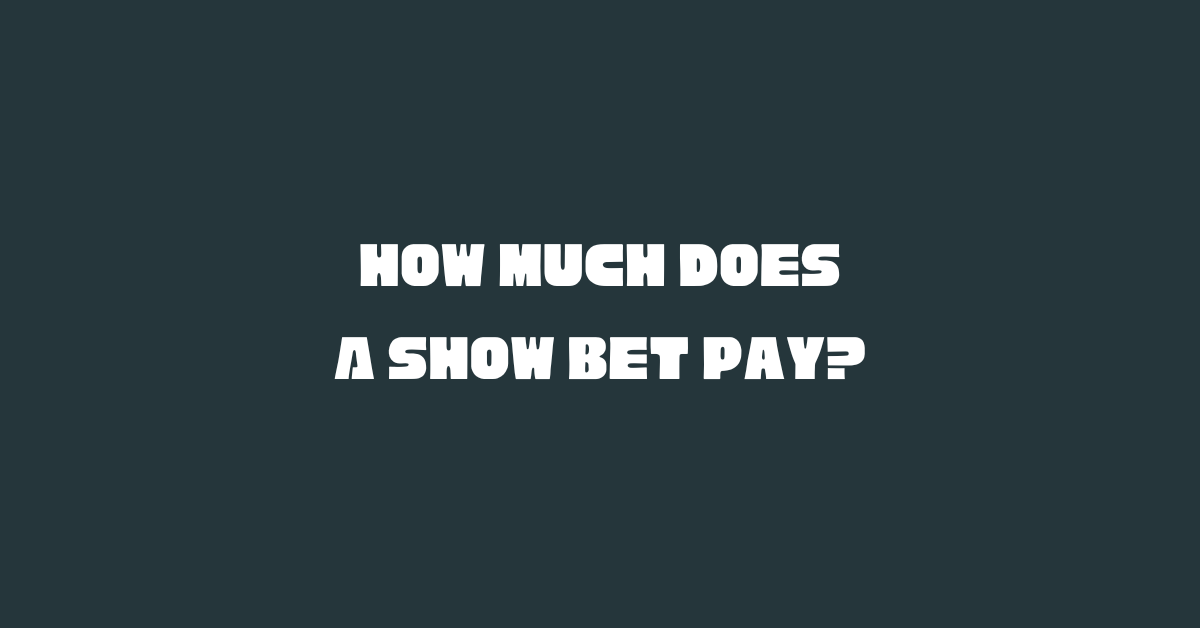Explanation of Show Betting
In horse racing, show betting is a popular type of wager where you bet on a horse to finish in the top three positions. Unlike win bets, where the horse must come in first, or place bets, where the horse must come in first or second, show bets have a broader scope of potential outcomes. This can be appealing to bettors who want a higher chance of winning, even if the payout might be lower compared to win or place bets.
Show betting is considered a more conservative approach to horse race betting, as it offers a higher likelihood to win due to the horse only needing to finish in one of the top three spots. This can be advantageous for bettors who prefer a lower risk strategy or are looking to increase their chances of winning a bet, even if the payout might not be as substantial as with win or place bets. Show betting can be a good option for those who are new to horse race betting or for those who want to increase their chances of winning more frequently.
Understanding Show Bet Odds
Show bet odds represent the potential payout a bettor could receive if their chosen horse finishes the race in either first, second, or third place. The odds for show bets are typically lower than those for win bets, as the likelihood of a horse at least placing in the top three is higher than winning the race outright. Understanding show bet odds is essential for bettors to assess the potential return on their investment and make informed betting decisions.
When looking at show bet odds, it is crucial to remember that the odds are influenced by the perceived chances of a horse finishing in the top three. Horses that are considered strong contenders to win the race will often have lower odds for show bets, reflecting the higher probability of them finishing in the top three. Conversely, horses with less favorable chances of winning will have higher show bet odds, indicating the lower likelihood of them placing in the top three spots.
Calculating Potential Payouts for Show Bets
When it comes to determining potential payouts for show bets in horse racing, the process involves a straightforward calculation. To figure out your potential winnings, you need to multiply your wager by the show odds of the horse you bet on. This simple calculation will give you an idea of what you could potentially walk away with if your selected horse finishes in the top three positions.
For example, if you place a $10 show bet on a horse with odds of 5/1, the calculation would be: $10 (wager) x 5 (show odds) = $50 potential payout. This means that if the horse finishes anywhere in the top three, you would win $50 in addition to getting back your initial $10 wager. Understanding how to calculate potential payouts for show bets is essential for making informed decisions when betting on horse racing events.
Factors Affecting Show Bet Payouts
A key factor affecting show bet payouts in horse racing is the size of the betting pool for that particular race. The more money that is wagered on a horse to show, the lower the potential payout will be for those who bet on that horse. This is because the total amount of money in the pool is divided among the winning bets, so when a horse is heavily favored to show, the payout for a successful bet will be smaller.
Another important factor influencing show bet payouts is the odds of the horses that finish in the top three positions. If the top three horses in a race have high odds, the show payouts have the potential to be more lucrative for bettors. Conversely, if the top three horses have low odds, the show payouts will typically be smaller, as these horses were more heavily favored to perform well in the race. The odds of the specific horses that finish in the top three positions directly impact the amount of money that is paid out to successful show bettors.
Comparing Show Bet Payouts to Win and Place Bets
When comparing show bet payouts to win and place bets, it is important to consider the likelihood of each outcome. In show betting, the horse must finish in the top three positions, providing a higher chance of winning compared to win or place bets. However, this higher probability often translates to lower payouts.
On the other hand, win bets require the chosen horse to finish first, offering the highest potential payout but with a lower probability of winning. Place bets are slightly less risky as the horse needs to finish in the top two positions, offering a balance between potential payout and probability of winning. Understanding the nuances of each type of bet can help bettors make informed decisions when placing their bets at the racetrack.















